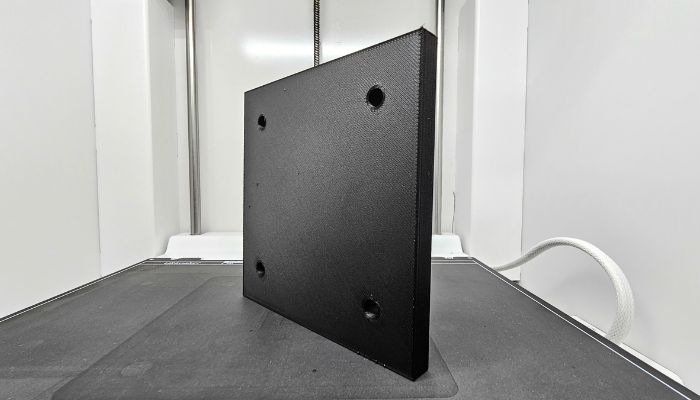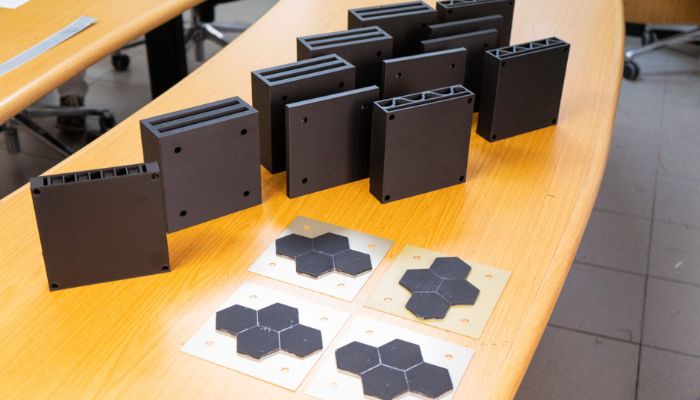3D Printed Kevlar Shields to Revolutionize Aerospace Repair Techniques

Aircraft and spacecraft have become central to our way of life. Whether for traveling, satellite communications, navigation, national security or any of the other numerous applications for which these craft are necessary, it is important that they be able to be repaired swiftly and competently to prevent disruption or even danger. Now there may be a new way to do this. The SBORAEK project is seeking to find a better way to repair aerospace structures through the use of 3D printed Kevlar shields.
SBORAEK, which stands for Smart Ballistic Optimization for Repairing of Aerospace Exostructures using 3D-printed Kevlar and is a play on words referring to Turkish pastry Börek, is a project being led by Dr. Leonardo Barilaro, Senior Lecturer in Aerospace Engineering at the Malta College of Arts, Science, and Technology (MCAST). Additionally, it is funded by Malta Council for Science & Technology while being supported by a collaboration between MCAST’s Institute of Engineering and Transport (IET), CISAS of the University of Padova (Italy), and Skyup Academy (Italy). The goal is to create shields which will allow for faster and more cost-effective repair of space- and aircraft.

One of the 3D printed Kevlar shields made with continuous composite extrusion 3D printing
3D Printed Kevlar Shields to Improve Aerospace Repairs
The structural integrity of aircraft and spacecraft is, understandably, paramount for safety. And it can be a real challenge since space debris or even micrometeoroids can collide with these craft and cause serious damage. Considering that according to the ESA’s latest numbers there are more than 40,500 space debris objects greater than 10cm out there, the ability to quickly repair these craft is hugely important. However, current methods are both time-consuming and expensive. SBORAEK aims to change this.
The project has three main goals: developing a method to optimize the design of these shields for superior ballistic performance (for instance when colliding with debris), enabling the development of custom repair patches with 3D-printed continuous aramid fibers (Kevlar) combined with other materials for enhanced functionality and ultimately working to reduce MRO (Maintenance, Repair, and Overhaul) time by streamlining the repair process. And as is clear, 3D printing is central to the creation of these Kevlar shields.
But how does it work? Well, like the Börek pastries, which are made with layers of thin, flaky dough, the idea is to create layered structures using continuous composite 3D printing. The material of course will be aramid fibers, for example Kevlar and carbon fiber. These are often chosen in aerospace as they are not just lightweight but exceptionally strong, comparable to metal in many cases.

Examples of different 3D printed Kevlar shields made for the project
The resulting shields can be considered like repair patches, which can be customized to fit each particular case. The reasoning behind this design is that they can minimize downtime and repair costs through on-site repairs whiel also achieving superior customization with reduced materials and weight, an improvement of overall repairability and find applications beyond traditional aviation.
The project culminated recently in testing of the Kevlar 3D printed shields. This was done in collaboration with Thiot Ingenierie (France) at the Hypervelocity Impact facility, which features a Light-Gas gun. This was used to test the ballistic performance of the 3D printed Kevlar shields when it comes to high-energy impact, for example as a result of space debris or even a bullet.
As of right now, the results have not yet been announced. However, it is undeniable that if they are successful, the ability to 3D print these shields on demand would allow for faster implementation as well as much greater personalization, making repair processes from everything from the ISS to small satellites much more efficient. You can learn more about the project HERE.
What do you think of these 3D printed Kevlar shields from the SBORAEK project? Do you think they’ll be useful for repairing aerospace structures? Let us know in a comment below or on our LinkedIn, Facebook, and Twitter pages! Don’t forget to sign up for our free weekly newsletter here for the latest 3D printing news straight to your inbox! You can also find all our videos on our YouTube channel.
*All Image Credits: SBORAEK






